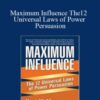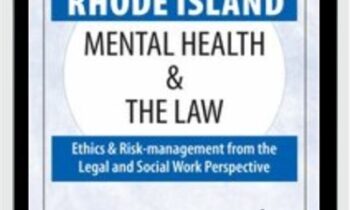$27.00 Original price was: $27.00.$12.00Current price is: $12.00.
Digital Download: You will receive a download link via your order email
Save up to 85% compared to Salepage prices. In addition, earn additional points. Save more on your next order.
Please contact email: esygbteam@gmail.com if you have any questions about this course.
 Purchase this course you will earn 12 Points worth of $1.20
Purchase this course you will earn 12 Points worth of $1.20Elevate your skills with the Ellen Grzyb – The Nice Factor The Art Of Saying No course, available for just $27.00 Original price was: $27.00.$12.00Current price is: $12.00. on Utralist.com! Browse our curated selection of over 60,000 downloadable digital courses across diverse Personal Development. Benefit from expert-led, self-paced instruction and save over 80%. Start learning smarter today!
 Ellen Grzyb – The Nice Factor The Art Of Saying No
Ellen Grzyb – The Nice Factor The Art Of Saying No
In this book we aren’t interested in turning you from a nice person into a nasty one. On occasion you do that yourself and you know it’s not very pleasant. We will be using the terms ‘not nice’ and ‘not nasty’ to describe what we see as the middle ground of behaviour, where you have a choice in how you are going to behave. It is why we have subtitled this book ‘The Art of Saying No’. People who are too nice for their own good are too often afraid to, or completely incapable of, saying no. There’s often a fear it will sound harsh, dismissive, rude or brusque, so they don’t say anything at all. Here we will look at how to turn niceness into an art, helping you to say no, perhaps without ever using the word.
We will look at all aspects of niceness and nastiness and explore ways in which you can change your behaviour so that you are more in charge of what happens rather than being in the grip of emotions that take over and render you helpless and impotent. You do not have to change your whole self. By understanding the choices available to you and making some new choices, you can make a significant difference in your life.
The world needs nice people. It needs the qualities that nice people have: consideration, thoughtfulness, caring, sensitivity. Nice people are often more attuned. They facilitate difficult situations and deal with difficult people that the rest of the world avoids. They tend to see the best in people and are often genuinely interested in making things easier for others. Nice people are usually very polite, understanding, empathetic and compassionate. They know what it’s like to be the underdog and are genuinely sympathetic. They are usually very welcoming and generous. Becoming less nice does not mean having to give up all those wonderful qualities that contribute to the world’s well-being. Becoming less nice contributes to your well-being. – Ellen Grysb
Delivery Method
Cultivate continuous growth with the Ellen Grzyb – The Nice Factor The Art Of Saying No course at Utralist.com! Unlock lifetime access to premium digital content, meticulously designed for both career advancement and personal enrichment.
- Lifetime Access: Enjoy limitless access to your purchased courses.
- Exceptional Value: Benefit from savings up to 80% on high-quality courses.
- Secure Transactions: Your payments are always safe and protected.
- Practical Application: Gain real-world skills applicable to your goals.
- Instant Accessibility: Begin your learning journey immediately after buying.
- Device Compatible: Access your courses seamlessly on any device.
Transform your potential with Utralist.com!
Related products
Personal Development
= 15 Points
Health and Medical
= 28 Points
Personal Development
= 33 Points
Personal Development
= 33 Points
Personal Development
= 27 Points
Personal Development
Rhode Island Mental Health & The Law – 2020 – Robert Landau & Frederic Reamer
= 83 Points
Personal Development
= 44 Points
Personal Development
= 43 Points




 Ellen Grzyb – The Nice Factor The Art Of Saying No
Ellen Grzyb – The Nice Factor The Art Of Saying No






